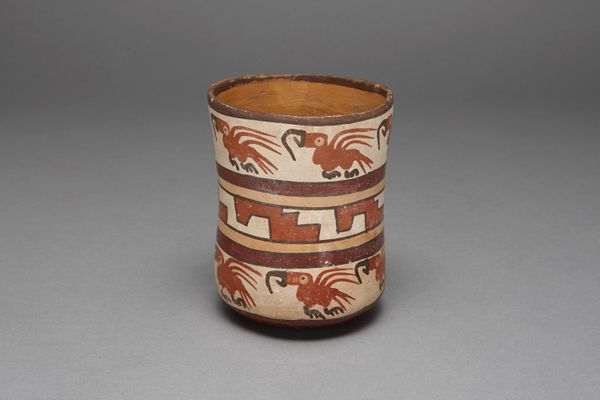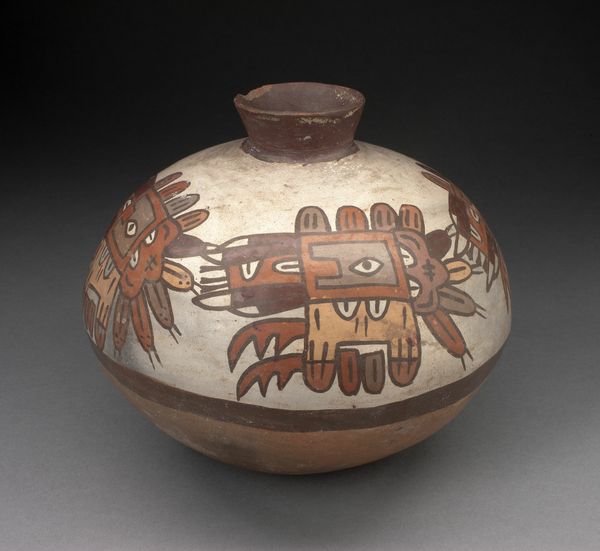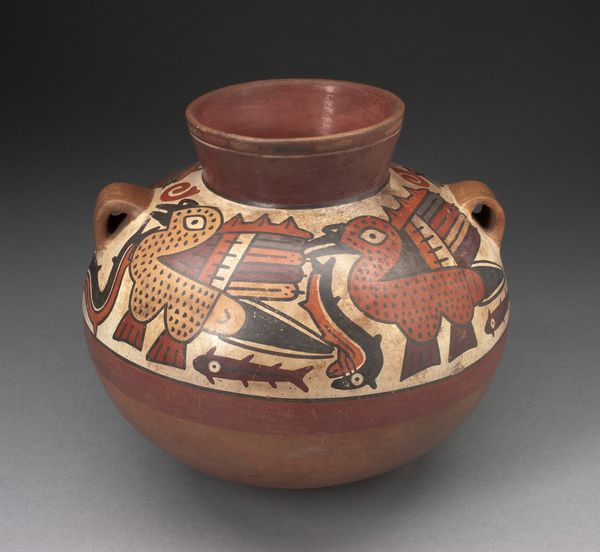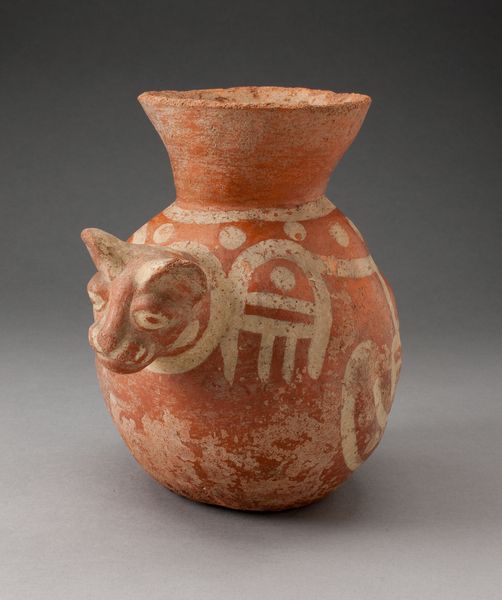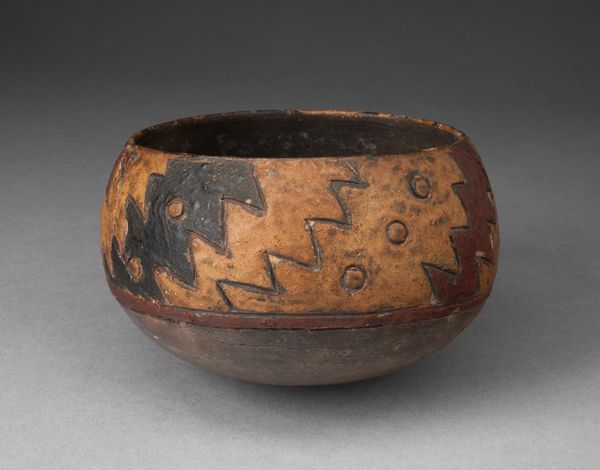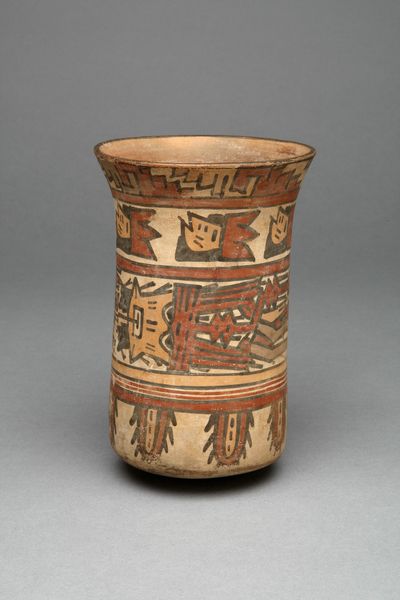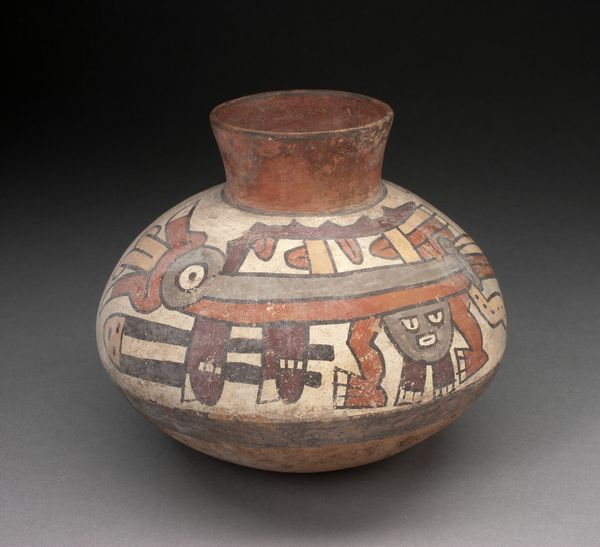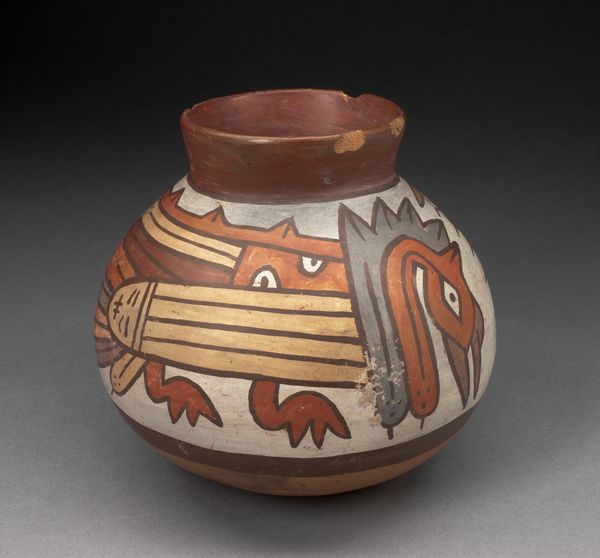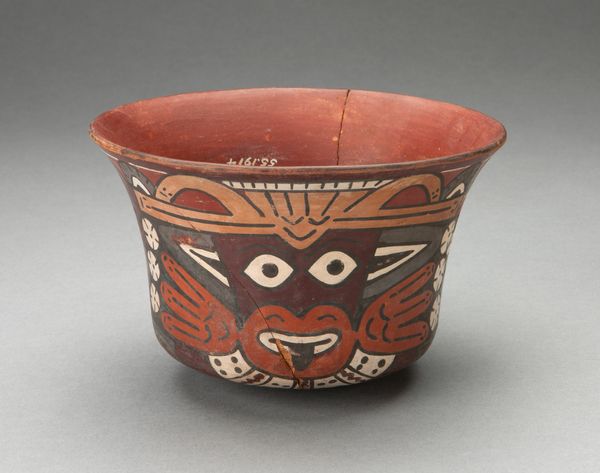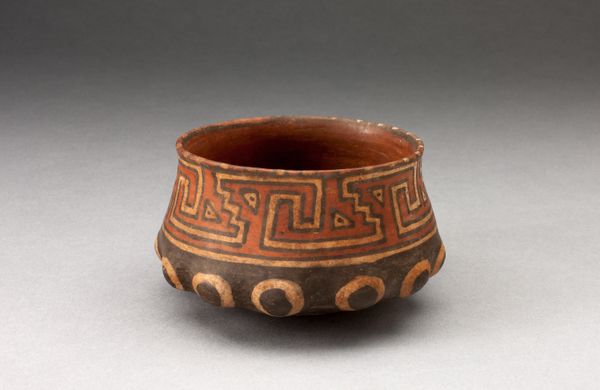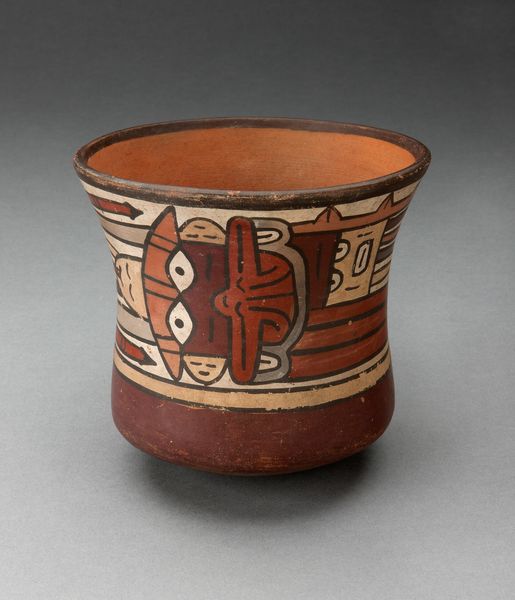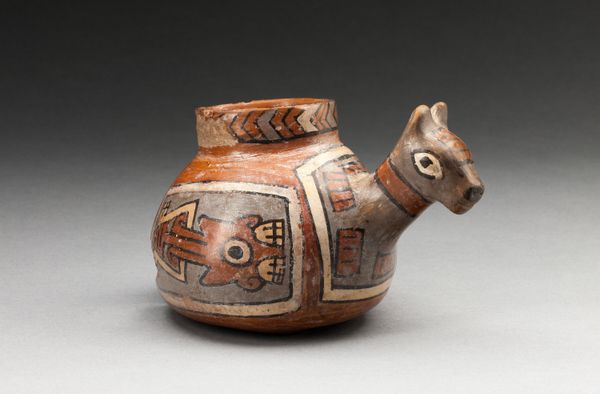
Jar Depicting Rows of Llamas and Abstract Stepped Motifs c. 180 - 500
0:00
0:00
ceramic, earthenware
#
ceramic
#
figuration
#
earthenware
#
stoneware
#
geometric
#
ceramic
#
indigenous-americas
Dimensions: 10.8 × 11.1 cm (4 1/4 × 4 3/8 in.)
Copyright: Public Domain
Editor: Here we have a ceramic jar dating from around 180 to 500 CE, created by the Nazca people. What strikes me is the repeating pattern of stylized llamas; it almost feels like an early form of graphic design. How do you interpret this work, looking beyond just its aesthetic qualities? Curator: Well, thinking intersectionally, this jar presents a powerful link between culture, environment, and social structure. The llama wasn't just a decorative motif; it was central to Nazca society, a pack animal essential for trade and agriculture. The stepped motifs, often interpreted as mountains or agricultural terraces, reinforce this connection to the land. What statements could the choice of animal imply about status within the culture? Editor: That's fascinating. So, the jar isn't simply a vessel but also a kind of statement piece? Perhaps conveying societal values or aspirations? Curator: Exactly! And it is worth considering this wasn’t simply an aesthetic choice. Who owned it, and what power dynamic did it suggest? This earthenware could symbolize prosperity and control over resources, essential to understand power within this pre-colonial society. Think about how contemporary artists use similar visual strategies to comment on economic inequality or environmental degradation. Do you see parallels? Editor: I see what you mean. Recognizing the role of the llama and landscape makes me reconsider the jar’s original function and the message it conveyed. The jar now becomes more than just a jar! Curator: Precisely. It invites us to rethink the relationship between ancient aesthetics and contemporary concerns, illustrating how art can both reflect and shape social realities across time.
Comments
No comments
Be the first to comment and join the conversation on the ultimate creative platform.
